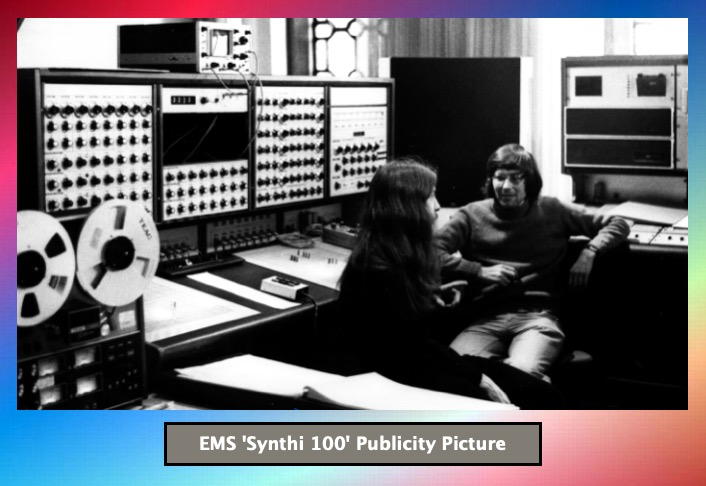
The Delaware and Tinnitus
Following our successful concert for the IEE, which had featured the Delaware synthesiser (the EMS Synthi 100), we received many requests from programme departments to feature the synthesiser in their productions. One of these requests came from Television Science Documentaries, who were making a programme about tinnitus. Tinnitus is a hearing condition, where the sufferer experiences a ringing, buzzing, whistling, hissing or other noise in the ear or ears in the absence of sound or noise in the environment.
It was requested that a tinnitus sufferer, a Mr Riley, should be filmed in Studio C, and that I should, in response to his descriptions of the sounds in his head, recreate these sounds on the Delaware. This would give the audience a clear understanding of what Mr Riley was suffering. He had admitted to becoming suicidal due to this constant distress, and that he was prepared to have his hearing surgically destroyed rather than endure any more noises.

In a few minutes he had given me some useful clues as to what he was hearing, and I had reconstructed the sound. This seemed to consist mainly of overloaded white noise, combined with a sine wave at about 8kHz. There was also a pulsing phasing effect at about eighty cycles per minute [around 1.3Hz]. This, I think, was at the same speed as his heart rate.
That's the sound in my head...........except............
It isn't loud enough!"
I then turned up the studio loudspeaker monitor level until we were all suffering at the threshold of pain. "That's how loud it is." he said. The director of the programme was delighted with the result, and admitted that he hadn't been aware how distressing this illness really was. The cameras were put away and the lights unplugged.
Everyone was about to go when Mr Riley came over to me and said, "It's gone, you know. When you turned the loudspeaker off, the sound in my head went as well and it hasn't come back!" I immediately told the director what had occurred, but he didn't seem interested and assured me that he'd got more than enough material for the programme.
Everyone left, except Mr Riley, who told me the sound in his head was beginning to return. We replayed the synthesised sound, this time on headphones, and again he reported that he had gained some considerable relief. I made him an audio-cassette recording of the sound for him to take with him, and some days later he told me that by playing the tape to himself at night he had been able to sleep for up to two hours.
What we had discovered was what is called today the 'masking effect'. This remains one of the few non-destructive treatments for tinnitus.
DOCTOR WHO
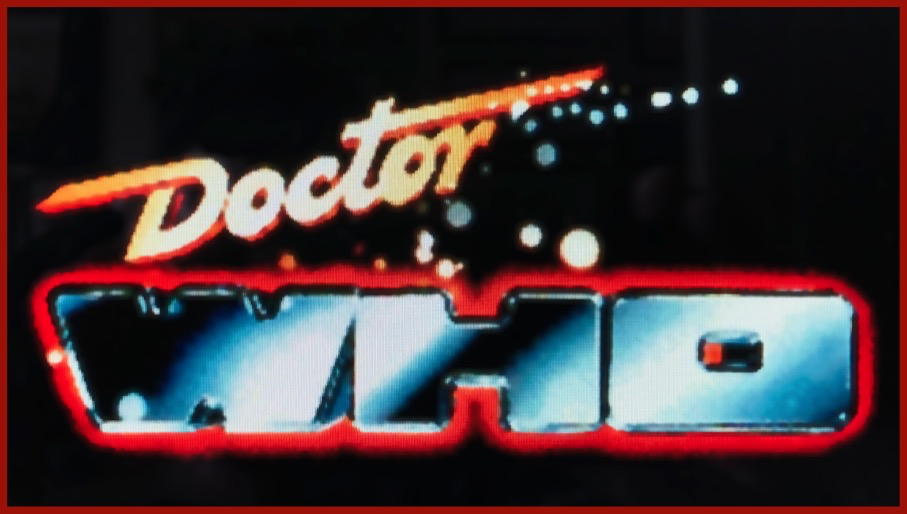
Although the signature tune for the television science fiction drama series 'Doctor Who', had been composed by Ron Grainer, it had been realised at the Radiophonic Workshop by Delia Derbyshire in 1963. None of the incidental music was composed at the Workshop.
In 1972, Michael Bryant, director of 'Dr Who' asked me if I would like to compose the incidental music for a new six-part adventure called 'The Sea Devils'. He pointed out that each story would require at least ten minutes of music and there would be only one week between episodes.
The schedule for each week was to be as follows:-
Monday: View 'fine cut' of the programme with the director, to decide music 'in' and 'out' cues.
Tuesday and Wednesday: Compose and realise the music.
Thursday morning: Review the music cues with the director and make any alterations.
Thursday afternoon: Track lay the music with the editor.
Friday: Sound Dub. Programme now ready for transmission on the following Sunday.
I agreed to the proposal, but I hadn't taken into account a few problems.
There was no facility for synchronising sound and videotape, and there was no time to use performing musicians; the soundtrack had to be entirely electronic. To achieve synchronisation, I took timings from the videotape and marked the cue points on the face of my stopwatch with a 'Chinagraph' (wax) pencil. By using three colours, I was able to make synchronous cues of more than three minutes.
- There were no computers, or MIDI-based programs to help.
- I am fairly certain that this was the first entirely electronic score of incidental music to be unleashed on the general public.
Recently [at the time of writing], the collected music for 'Dr Who' has been released by BBC Music, and in the notes for 'The Sea Devils', Mark Ayres remarks:-
"Malcolm has always been something of a maverick, ploughing his own furrow, totally disinterested in rules, and often frustrated by others' inability to 'get' his music. The 'Sea Devils' proves no exception! It was realised entirely on the Delaware, the massive modular analogue synthesiser that occupied the entire room and with which Malcolm had a particular affinity. Whatever your tastes, it's striking work that helps turn this adventure into something really special and is undoubtedly some of the most uncompromising electronic music ever to feature on mainstream popular entertainment."

In the following eleven years I was to compose music for many episodes of 'Dr Who'. During this time my style of writing changed, sometimes influenced by the 'Dr Who' fans, known as the 'Whovians', but mostly by new equipment, synthesisers and ways of working.
In the early 1970s, Yamaha, who had then been making musical instruments for more than a century, produced two synthesisers called the SY1 and SY2. I acquired a slightly damaged demonstration model of the SY2 from Yamaha and found it very useful. Housed in a trombone case, it had detachable spindly chromium legs, which made it look very 1950s. 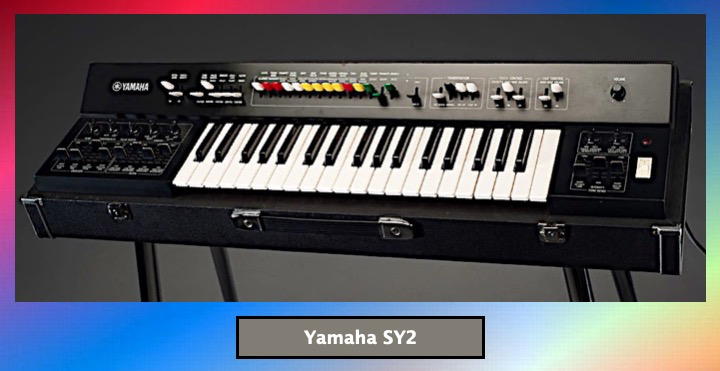 It could only produce one note at a time, but it did have a feature which made it more of a performance instrument than many early synthesisers. Fixed across the back of the keys was a bar, which moved when any key was pressed beyond its backstop. On the end of this bar was a piece of obscured glass, the density of which varied from top to bottom. A light shone through this glass on to a photo-resistor. In the glass's normal position, no light reached the photo-resistor, but as more pressure was applied to the key more light was transmitted. The varying voltage generated across the resistor could be used to alter several parameters: volume, vibrato speed and depth, filtering. etc. Although this was a simple synthesiser, the additional control it offered injected some real human drama into what could be a dangerously sterile soundscape.
It could only produce one note at a time, but it did have a feature which made it more of a performance instrument than many early synthesisers. Fixed across the back of the keys was a bar, which moved when any key was pressed beyond its backstop. On the end of this bar was a piece of obscured glass, the density of which varied from top to bottom. A light shone through this glass on to a photo-resistor. In the glass's normal position, no light reached the photo-resistor, but as more pressure was applied to the key more light was transmitted. The varying voltage generated across the resistor could be used to alter several parameters: volume, vibrato speed and depth, filtering. etc. Although this was a simple synthesiser, the additional control it offered injected some real human drama into what could be a dangerously sterile soundscape.
In 'Resurrection of the Daleks' I used the SY2 extensively and gave the Daleks their own menacing theme. At the end of the story we bade a sad farewell to Tegan.
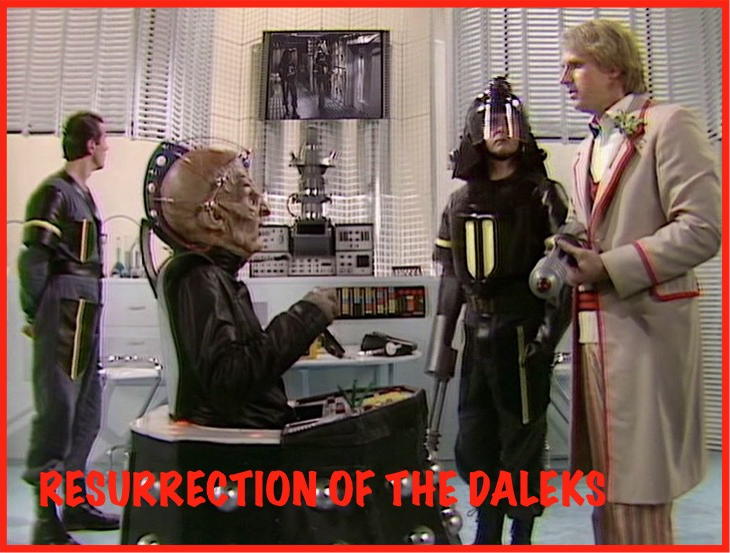
For the music in the 'Dr Who' story 'Enlightenment', the watery environment of the Sea Devils is continued, but this time in space: a boat race, with 'galleon' space ships. The prize for the winner - enlightenment. For the South American scenes I wrote a milonga, a sort of gentle tango, which became very popular in Argentina [in the 1870s].
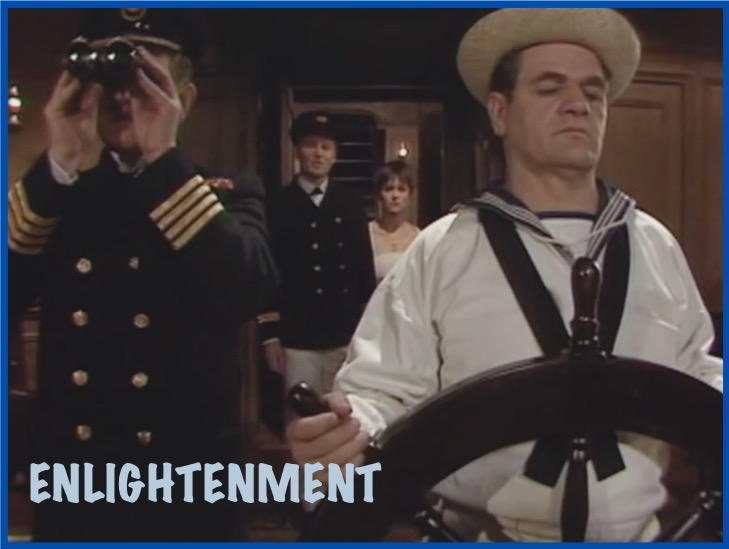
My favourite aliens in 'Dr Who' were the Cybermen, probably because they were more mobile than the Daleks or K9 [the robotic dog]. In the story 'Earthshock', I was given an opportunity to write a march for them.
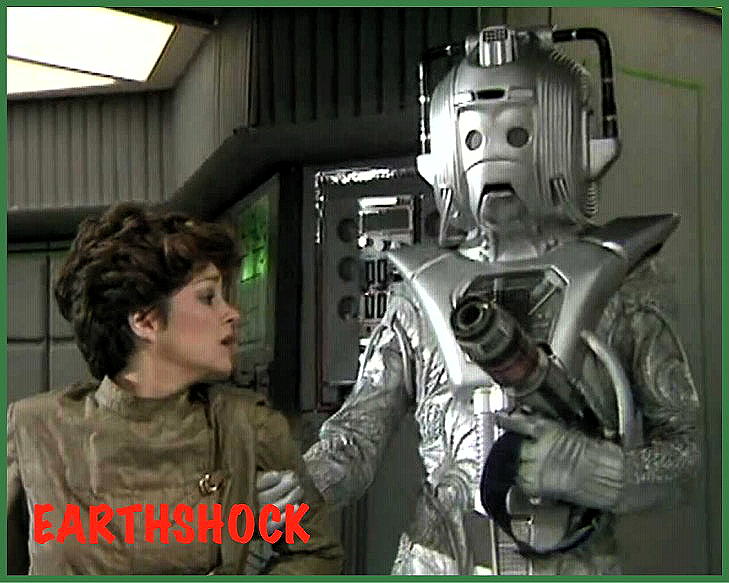
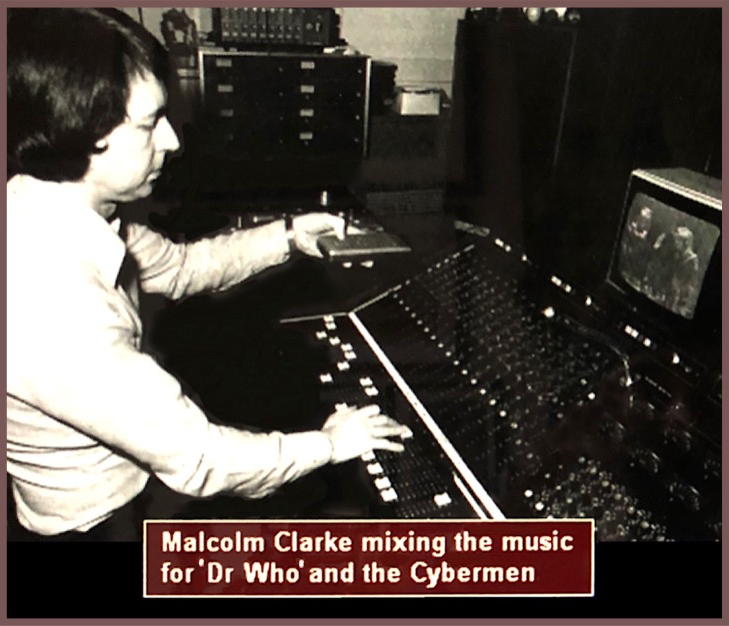
VISTORS & NEW IDEAS
There were regular visitors to the Workshop who would drop in for a chat about new ideas in the world of sound. One of these was Tim Orr, a technical designer working for EMS.
Tim called in one day when I was trying to do some voice treatments with the Delaware. What I was doing interested him, and he told me that his latest idea was to make a pre-configured filter device that would emulate the human voice. A ramp waveform could be fed in and filtered to produce vowel sounds. We discussed the possibilities further and came to the conclusion that it should be possible, using conventional voltage control methods, to make something that could produce all vocal sounds by analysing and synthesising in real time. Two years later, towards the end of 1974, Tim contacted the Workshop to say that EMS had a newly designed 'synthesiser' which they called a 'vocoder', and "would we like to assess it?" At the beginning of 1975, it arrived at the Workshop, mounted on a trolley about the size of a small coffee table.
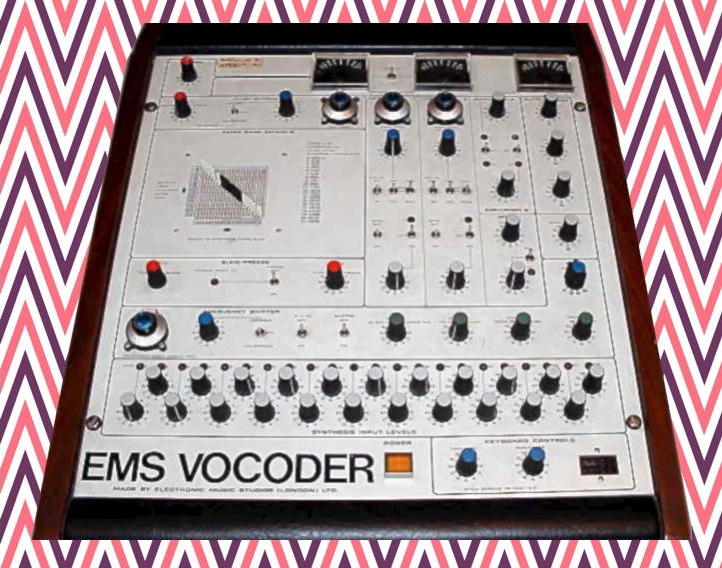
VOCODER 5000 SPECIFICATIONS
22 channels: Each with an analysis filter, envelope follower, slew limiter, VCA and a second synthesis filter.
Analysis filters: Bandpass on 205, 249, 303, 367, 444, 539, 653, 791, 958, 1161, 1406, 1703, 2064, 2500, 3030, 3670, 4447, 5388, and 7888Hz, with the other two filters being HP (high-pass) and LP (low-pass) at the band range ends. Roll off of 24dB/8ve (dB per octave), with adjacent channel rejection of 16dB at the neighboring centre frequency.
Envelope followers: Dynamic range of 54dB. All filters have a CV (control voltage) input to externally control synthesis channel gain, with CV inputs being available on a multipin connector at the rear of the vocoder, designed to interface with the EMS Computer Synthi [a smaller variation of the Synthi 100, not used at the RWS]. Envelope outputs from the input channels are 0 to -4V linear with respect to signal levels. CV inputs are 0 to +4V, same linearity.
Pitch extractor stage: Produces a CV proportional to the log of the frequency at the speech input. It sends two different control voltages (CV-outs): +0.5V/8ve (volts per octave) for noise control and from +1.1 to -1.1V/8ve to control VCOs. This stage also has a LP filter: 100Hz to 1kHz.
2 VCOs: 1Hz to 10kHz. Square and ramp outputs, +0.5V/8ve response. Also one noise source. VCOs have controls for gating, frequency, level, pitch extraction, external CV, and keyboard input. Noise source has controls for gating, level,and noise colour.
Input detector: (EMS calls this the 'Voiced/Unvoiced Detector'): provides gating, basically, with status lights for open or closed states.
Slew/Freeze control: Can be manually operated with a variable control or freeze switch, plus external CVs of 0 to +1V.
Frequency shifter stage: Has a range of .05Hz to 1kHz, with carrier breakthrough less than 60dB, and outputs for up-shift, down-shift, original and mixed signals.
Patching: By EMS matrix, 22 x 22 patchpoints.
Inputs: 10kΩ unbalanced, -20 dBm minimum.
Outputs: 0 dBm unbalanced.
Spectrum display output: For an X-Y display, via two 75Ω BNC connectors.
Three PPM meters: For monitoring all levels: speech input, excitation input and outputs.
Power: 110 or 220 VAC, 80W.
Size: 35" x 9.5" x 21.5".
Weight: 45lb.
©Malcolm Clarke 2003
